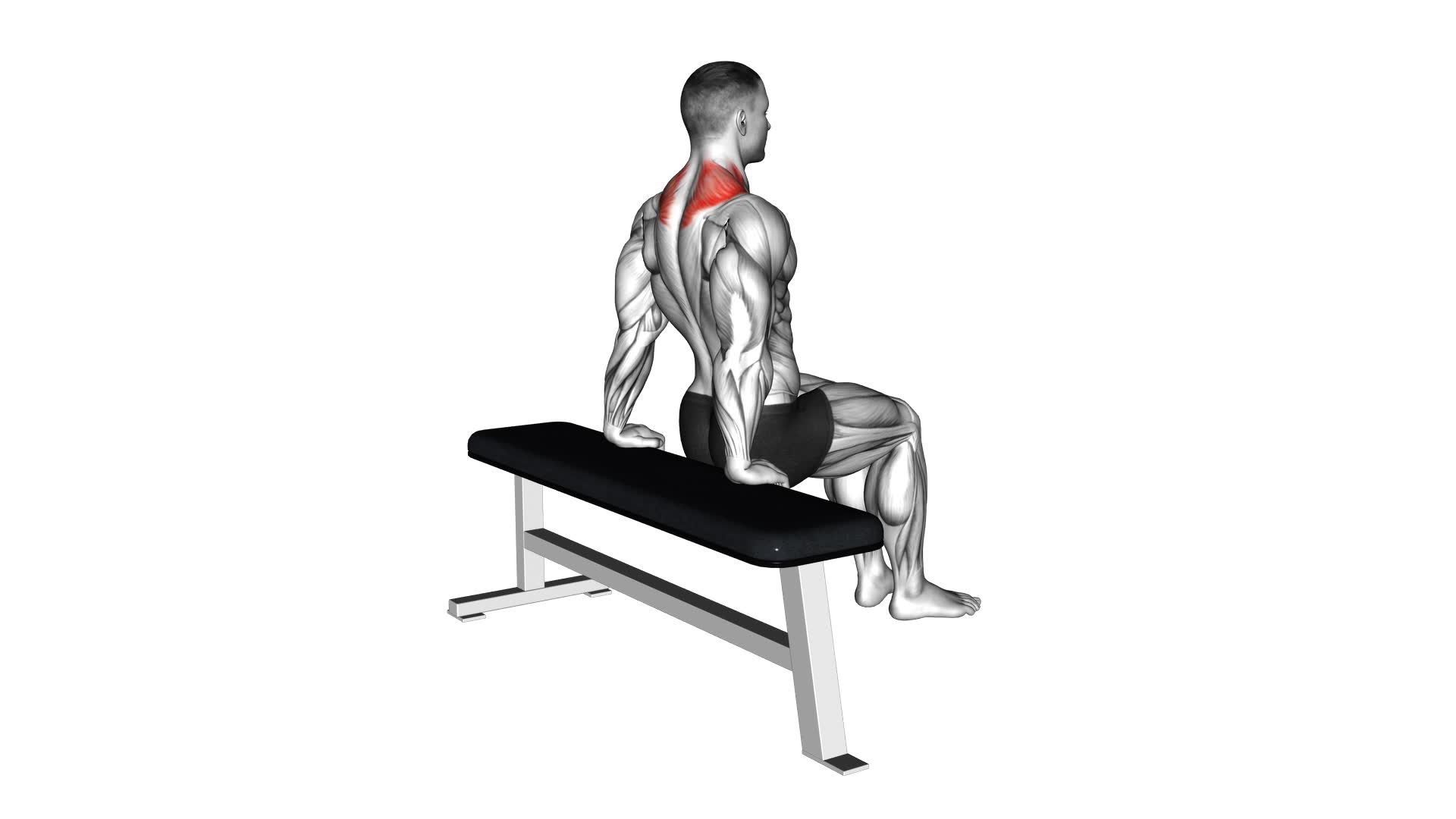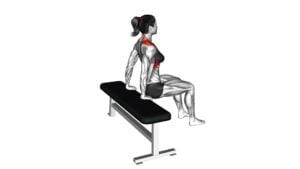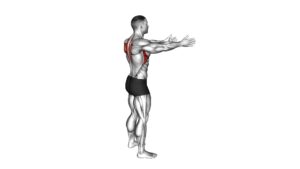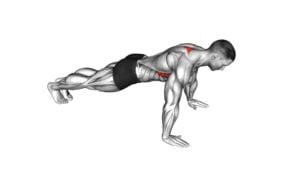Scapula Dips – Video Exercise Guide & Tips

Are you looking for a challenging and effective exercise to strengthen your shoulders and upper back? Look no further than scapula dips.
Watch This Exercise Video
In this video exercise guide, we'll show you the proper form and technique to get the most out of this exercise. Whether you're a beginner or advanced, we've got modifications and variations to suit your fitness level.
Plus, we'll share tips for maximizing your results. Get ready to dip into a stronger, more toned upper body!
Key Takeaways
- Scapula dips improve shoulder stability and strength.
- Proper form and technique include engaging shoulder blade muscles, keeping shoulders relaxed, and avoiding common mistakes.
- Modifications and progressions can be made to increase or decrease the difficulty of scapula dips.
- Safety and injury prevention should be prioritized by warming up, using proper technique, and listening to your body's signals.
Benefits of Scapula Dips
You can experience improved shoulder stability and strength through performing scapula dips. Scapula dips are an effective exercise that targets the muscles surrounding your shoulder blades, known as the scapulae. This exercise not only helps to develop scapular control but also enhances shoulder stability, making it a great addition to your workout routine.
Scapula dips are a versatile exercise, but if you're looking for alternatives, there are a few options you can consider. One alternative is the scapular push-up, which involves maintaining a plank position while focusing on protracting and retracting the shoulder blades. Another option is the scapular pull-up, where you hang from a bar and focus on initiating the movement from your shoulder blades.
Performing scapula dips specifically targets the muscles responsible for shoulder stability. By strengthening these muscles, you can significantly reduce the risk of shoulder injuries and improve your overall shoulder function. Additionally, scapula dips help to correct imbalances in your shoulder joint, leading to better posture and alignment.
Now that you understand the benefits of scapula dips, let's move on to the next section, where we'll discuss the proper form and technique for performing this exercise.
Proper Form and Technique
To perform scapula dips with proper form and technique, focus on engaging your shoulder blade muscles throughout the movement. This exercise primarily targets the muscles in your upper back, including the rhomboids and trapezius. Start by positioning yourself on a dip bar with your arms fully extended and your body hanging straight down.
Keep your shoulders relaxed and retract your shoulder blades by squeezing them together. This engagement is crucial to ensure that the scapula dips target the intended muscles.
As you lower your body, focus on maintaining the engagement in your shoulder blades. Avoid letting your shoulders roll forward, as this can place excessive stress on the front of your shoulder joint and lead to common injuries such as impingement or rotator cuff strain. Additionally, be mindful of keeping your elbows close to your body throughout the movement to maximize the engagement of your shoulder blade muscles.
Common mistakes to avoid include using momentum to swing your body during the exercise, as this takes away from the targeted muscle engagement. It's also essential to avoid excessive shrugging of the shoulders, as this can strain the neck and trapezius muscles.
Modifications for Beginners
For beginners, an effective modification for scapula dips is to perform the exercise with assistance or support. This modification allows you to gradually build strength and confidence before progressing to the full exercise.
Here are two sub-lists of modifications that beginners can try:
- Assisted Scapula Dips:
- Use a resistance band: Attach a resistance band to a stable anchor and loop it around your shoulders. The band will provide support as you lower and raise your body.
- Use a bench or step: Place your hands on a bench or step behind you and keep your feet on the ground. This will reduce the amount of weight you have to lift.
- Supported Scapula Dips:
- Use a dip bar with parallel handles: This provides stability and support as you perform the exercise.
- Use a chair or sturdy surface: Position your hands on a chair or sturdy surface behind you and keep your feet on the ground. This will provide support and help you maintain proper form.
By starting with these modifications, beginners can focus on mastering the correct technique and gradually increase the difficulty level. It's important to avoid common mistakes such as rounding the shoulders or arching the back.
Now that you have learned about beginner modifications, let's move on to advanced variations to challenge yourself.
Advanced Variations to Challenge Yourself
Take your scapula dips to the next level with these advanced variations. To perform these advanced variations, you'll need a dip bar or parallel bars. These variations are designed to challenge your scapula muscles even further and help you build strength and stability.
One advanced variation is the weighted scapula dip. This involves adding weight to your scapula dips by using a weight belt or holding a dumbbell between your feet. Start with a lighter weight and gradually increase it as you get stronger.
Another advanced variation is the single-arm scapula dip. This variation requires a high level of strength and stability. Instead of using both arms, you'll perform the dip with just one arm while keeping the other arm extended to the side. This variation targets the scapula muscles on one side of your body at a time, providing a more intense challenge.
When performing these advanced variations, it's important to avoid common mistakes. One common mistake is allowing your shoulders to shrug up towards your ears. Keep your shoulders down and back throughout the movement to properly engage the scapula muscles. Another mistake is using momentum to complete the dip. Focus on using controlled movements and maintaining proper form.
Incorporating these advanced variations into your scapula dip routine will help you continue to challenge yourself and make progress in your strength training journey. Remember to start with lighter weights and gradually increase the intensity as your strength improves.
Tips for Maximizing Results
To maximize your results, focus on maintaining proper form and engaging your scapula muscles throughout the entire scapula dip exercise. By following these tips, you can prevent injuries and ensure that you're getting the most out of your workout:
- Maintain proper form: Keep your body straight and your core engaged throughout the exercise. Avoid arching your back or letting your shoulders hunch forward.
- Engage your scapula muscles: As you lower your body, focus on squeezing your shoulder blades together. This will activate your scapula muscles and help you get a deeper dip.
- *Common mistake*: Allowing your shoulders to shrug up towards your ears. This takes the emphasis off your scapula muscles and can lead to shoulder strain.
- *Preventing injuries*: Be mindful of any pain or discomfort in your shoulders or upper back. If you experience any discomfort, stop the exercise and consult with a fitness professional or healthcare provider.
Frequently Asked Questions
How Many Sets and Repetitions Should I Do for Scapula Dips?
To improve strength and maximize results, it's important to determine the right sets and repetitions for scapula dips. The number of sets and reps can vary depending on your fitness level and goals.
It's recommended to start with 2-3 sets of 8-12 repetitions, ensuring proper form and control throughout the exercise.
As you progress, you can increase the number of sets and reps, or try different scapula dip variations to challenge yourself even further.
Can Scapula Dips Help With Improving Posture?
Scapula dips can be beneficial for improving posture. By targeting the muscles in your upper back and shoulders, scapula dips help to strengthen and stabilize the scapulae, which are crucial for maintaining good posture.
This exercise can also help to alleviate and prevent upper back pain caused by poor posture. Additionally, there are various variations of scapula dips that you can try to target specific muscles and add variety to your workout routine.
Are Scapula Dips Suitable for Individuals With Shoulder Injuries?
Scapula dips can be a helpful exercise for improving posture. However, if you have a shoulder injury, you may need to make modifications. It's important to consult with a healthcare professional before attempting scapula dips if you have a shoulder injury. They can provide specific guidance on what modifications or alternative variations of the exercise would be suitable for you.
Safety should always be a priority when working out, especially if you have an injury.
Can Scapula Dips Be Done Using a Resistance Band Instead of a Dip Bar?
Yes, you can modify scapula dips by using a resistance band instead of a dip bar. This modification is beneficial because it allows you to target your scapular muscles and improve shoulder stability without putting excessive strain on your joints.
The resistance band provides adjustable resistance, making it suitable for all fitness levels. By performing scapula dips with a resistance band, you can strengthen your upper body and improve your posture while minimizing the risk of injury.
What Are the Common Mistakes to Avoid While Performing Scapula Dips?
When performing scapula dips, it's important to be aware of common mistakes and focus on proper form.
One mistake to avoid is rounding your shoulders forward, as this can put unnecessary strain on your neck and upper back.
Another mistake isn't fully extending your arms at the top of the movement, which can limit the effectiveness of the exercise.
To maintain proper form, engage your core, keep your chest up, and focus on squeezing your shoulder blades together throughout the entire exercise.
Conclusion
In conclusion, scapula dips are a highly effective exercise for strengthening and stabilizing the shoulder blades. By maintaining proper form and technique, you can maximize the benefits of this exercise.
Beginners can modify the exercise to suit their fitness level, while advanced variations provide a challenge for those looking to push themselves further.
Remember to always listen to your body and consult with a fitness professional if you have any concerns or questions.
Start incorporating scapula dips into your workout routine for improved shoulder strength and stability.

Author
Years ago, the spark of my life’s passion ignited in my mind the moment I stepped into the local gym for the first time. The inaugural bead of perspiration, the initial endeavor, the very first surge of endorphins, and a sense of pride that washed over me post-workout marked the beginning of my deep-seated interest in strength sports, fitness, and sports nutrition. This very curiosity blossomed rapidly into a profound fascination, propelling me to earn a Master’s degree in Physical Education from the Academy of Physical Education in Krakow, followed by a Sports Manager diploma from the Jagiellonian University. My journey of growth led me to gain more specialized qualifications, such as being a certified personal trainer with a focus on sports dietetics, a lifeguard, and an instructor for wellness and corrective gymnastics. Theoretical knowledge paired seamlessly with practical experience, reinforcing my belief that the transformation of individuals under my guidance was also a reflection of my personal growth. This belief holds true even today. Each day, I strive to push the boundaries and explore new realms. These realms gently elevate me to greater heights. The unique combination of passion for my field and the continuous quest for growth fuels my drive to break new ground.







